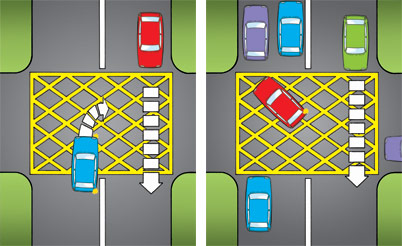Noticed the Warning Sign?
Driver, how observant are you? How many of the plethora of road signs that peer out at us as we make our way, hurriedly, do we note and react to, responsibly? Case in point: a lady was driving to work in her car when she struck the drivers door of another car as it passed through a rural crossroads in front of her, killing that driver. The said lady was hardly injured. She had failed to stop at the STOP sign: she hadn’t even seen the sign, though it was there in red and white. Worse still, she realised that for the previous twenty years she had been driving through that same crossroads twice each day without stopping; and she was a professional lady, alert, smart and responsible otherwise.
There’s a vast number of signs staring at us as we drive along, so many that we saunter on without taking much notice or, worse, no notice of them at all. What signs, then, have we to contend with?
Official signs are divided into three categories, namely, Regulatory, Warning, and Informative. Regulatory are those upright signs which mostly have a white background with red border, like the Yield sign. Others have a blue background with white symbols like those showing the tram and bus lane. There’s signs for parking, speedlimits, pedestrians, taxis, buses, even lowflying aircraft, animals etc There’s another similar lot of orange coloured ones for roadworks. Road markings, being on the flat, are more difficult to observe, like the stop lines, arrows indicating traffic flow, box junctions continuous white lines etc., all having legal status and must be obeyed. ‘Hatched’ areas, ( nothing to do with hens laying out,) are diagonal lines at merging roads, approach to crossroads etc and one must not enter there. Information signs guide us to a particular destination or show what services are available. The colour of these signs vary with the type of road.
Motorway signs have a blue background with white lettering, speed limit being 120km.
Primary (aka as National) roads have green background with white letters, speed limit 100km.
Regional roads have white background with black lettering and speed limit is 80km.
And what of the unofficial signs that emblazon the byeways? Over the last few weeks we’ve seen them on every P and T pole, gate post, Alder tree and Church gate – ELECTION POSTERS. Organisers attempt to outsize the other candidate with larger than large photographs of their candidate, sometimes three of the same on one pole: impressionist artists, they are. And they’re like the Madonna in the way they might look at you, after that they’re not like the Madonna. Sometimes, though, they add colour to a rainy day. How legal is it to hang up those posters?
Under the Litter Pollution Act, election posters can be put up on or after the Polling Day Order or for a period not exceeding 30 days, whichever is the less and they must be removed within 7 days of election day. They can’t be placed where they might be a hazard to traffic. A driver may feel entertained or distracted by those signs plus the many others like ‘Eggs for Sale, Car for Sale, Hot Dung for Sale etc.’
The Father of the Dail, himself, Oliver J Flanagan, former TD and Minister, didn’t pollute the countryside with election posters, rather he used his bicycle to canvass using just two posters, one on the front of the bike that said ‘Here comes Oliver J’ and on the back ‘There goes Flanagan.’ He served in the Dail for nearly 50 years. He was a conservative sort of fellow who would be a great assistant to McQuaid and DeValera in compiling The Public Dancehalls Act or Liquor Licensing Acts relating to Holy Hours and Good Fridays, especially; wasn’t it he who said there was no sex in Ireland till Gay got up his Late Late Show?
If you haven’t been heeding those road signs, do take a closer look, their presence and significance may surprise you: they may keep a plaster of Paris at bay or prolong a good life.
If road signs and election posters were grouped, wouldn’t they be together in the ‘Warning Sign’ category rather than the ‘Informative’ or ‘Regulatory?!’
‘Reflect on your present blessings of which every man has many, not on past misfortunes, of which all men have some.’ Charles Dickens.
 We use a 1.4 litre Toyota Yaris.
We use a 1.4 litre Toyota Yaris. 